Along E16
The tale of the stave churches
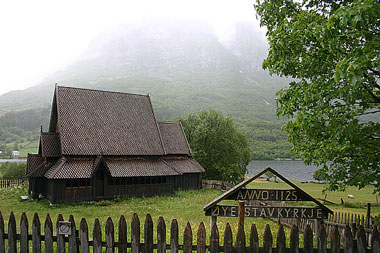
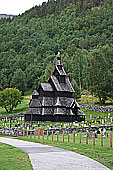
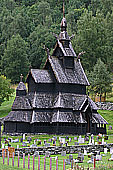
The E 16 starts in Londonderry in Ireland and goes by Great Britain by Oslo to Bergen by Fagernes. It is proposed to be expnaded to Gävle at the swedish east coast. Here I will concentrate on the section between Fagernes and Laerdal, Theis area is rich on secenry and has two mountain passes and several accesses to the Jotumheim Mountains. On the south end it is mainly agricultural velleys along the River Valdres and on the mountain sides. Further up it is more varied, yet mountainous scenery. Closer to Laerdal you can choose on the new high way or the old route through Galdane, which is an old settlement dating from the 17.th century and was populated untill 1947,clinging on the mountain side.
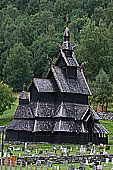


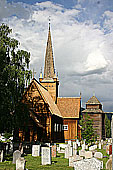 The stave church at Vågomo.
The stave church at Vågomo.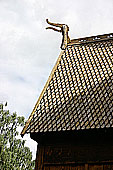 Detail of the stave church at lom
Detail of the stave church at lom


Stave church.
A stave church is a medieval wooden church with a post and beam construction related to timber framing. The wall frames are filled with vertical planks. The load-bearing posts (stafr in Old Norse, stav in Norwegian) have lent their name to the building technique. Related church types are post churches and churches with palisade walls. All but one remaining stave churches are loacted in Norway. The only one is located at Hedared in Sweden and one Norwegian stave church that was relocated in 1842 to Karpacz in the Karkonosze mountains of Poland.

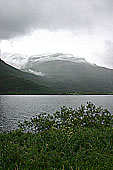

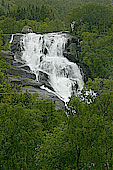
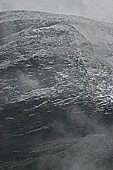
Along the road....
The road offers more than old churches, infact it is offering rather varied landscape from farming villages to high mountain passes with ski resorts. There are quite a few stops prepared for the travelers and some tourist traps. Still it does not feel like the road side is totally adapted for tourism like some parts on E6. At the northern end the road runs in to a deep river valley and the landscepe reminds of Romsdal alot. Here you have analtrnative road, the old road which is now a tourist route to Laerdal.


Öye Stave church
The church was originally built in 1125 at a site further down the valley where the new church dating ca 1750 is located. The old church was raized and forgotten. As the new church was enlarged in 1935, rhe remains of the old church was found and 156 various parts of the old stave church was refurbished. In 1952 the collection of parts was added with left over parts of the renovation of Heddal stave church and in the following year some parts was raised as a test. The old parts faired well and the church was recontructed on a new site near the high way and was opened in 1965..

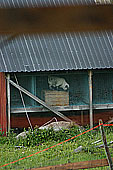

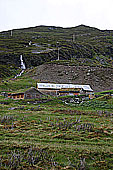
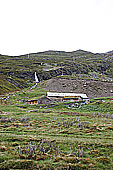
The route along the old road now named the Tourist road is a bit longer, more twisting and slower but offers a lot to see. Her is where Borgund Stave church is located with the museum of the church. The stops I recomend is the narrows right inthe beginning on the south end. Here the river has dugged itself in to very narrow canyon where the opposite wall is mer a yard or two away. The sight of the pressured water under is very imposing. .







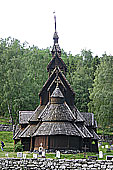
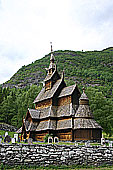
Borgund Stave church
Borgund was built sometime between 1180 and 1250 CE with later additions and restorations. Its walls are formed by vertical wooden boards, or staves, hence the name stave church. The 4 corner posts were connected to one another by ground sills, resting atop a stone foundation.1 The rest of the staves then rise from the ground sills, each stave notched and grooved along the sides so that they lock into one another, forming a sturdy wall.
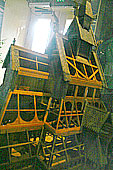
Close to the church which is much smaller in size in life what apperars on photos is most impressive. To get in to the church and the cementery you have to pay a fee and you will get an guided tour.


Close to the church is the new church and across the former high way a large museum buildning which has a lot of documentation and models on how the was constructed.




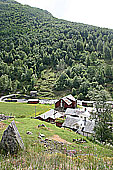

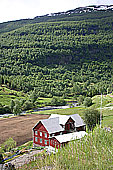
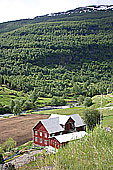




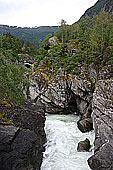
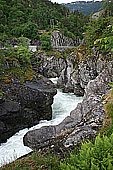
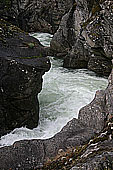
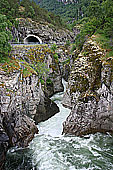

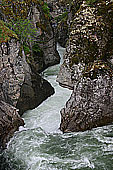
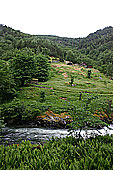

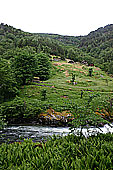
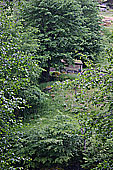

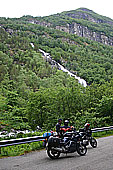
(Fagernes) (Laerdal) (The Aurland Road) (Flåm)
